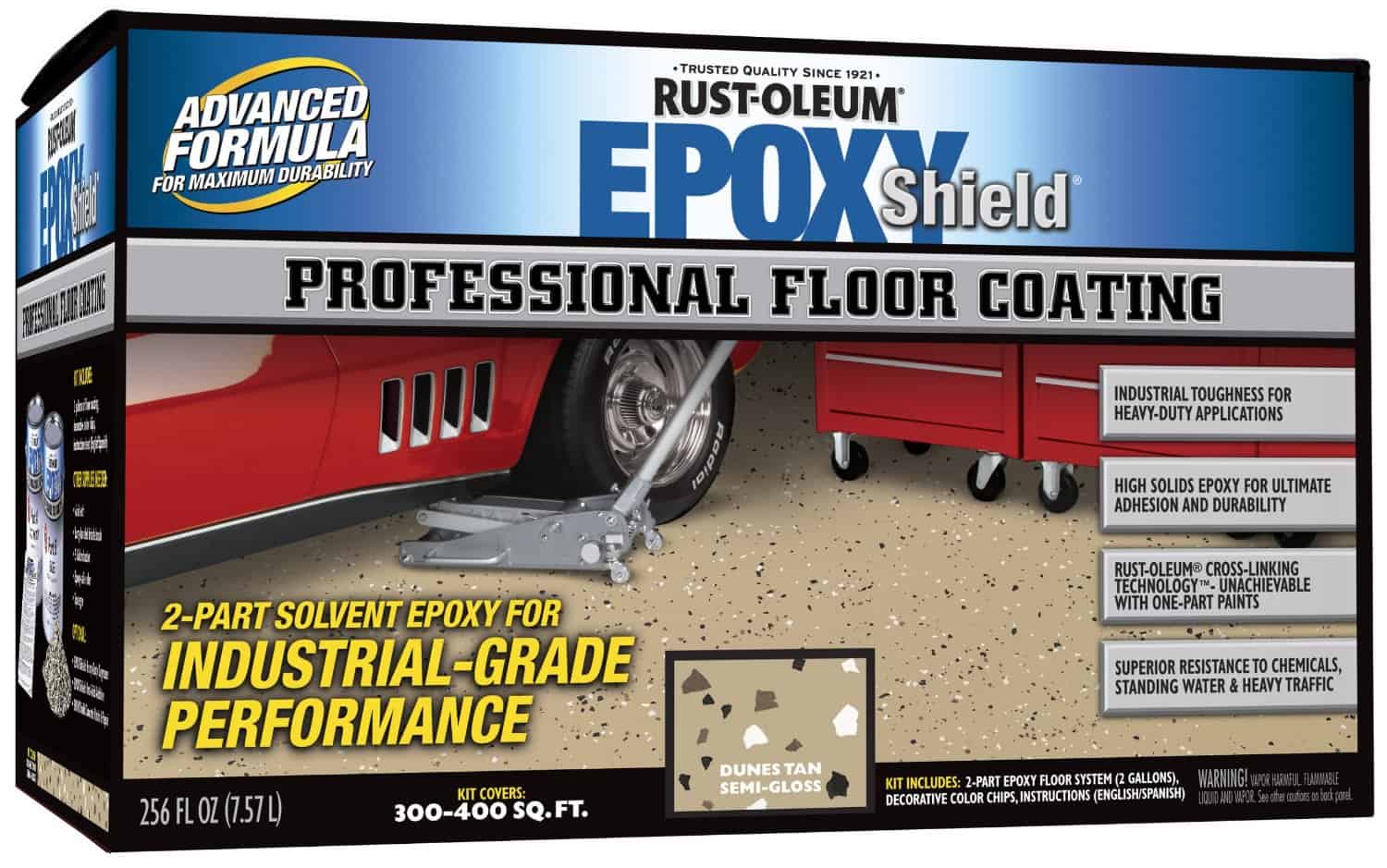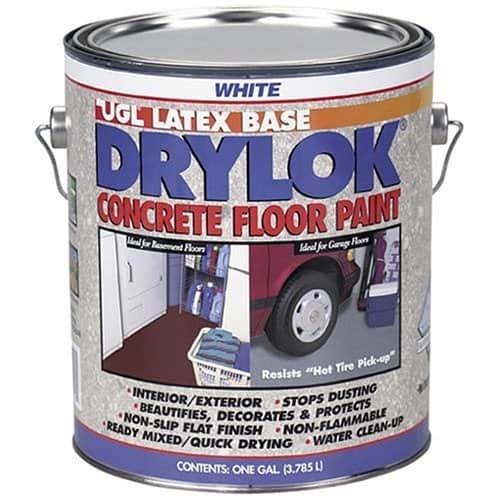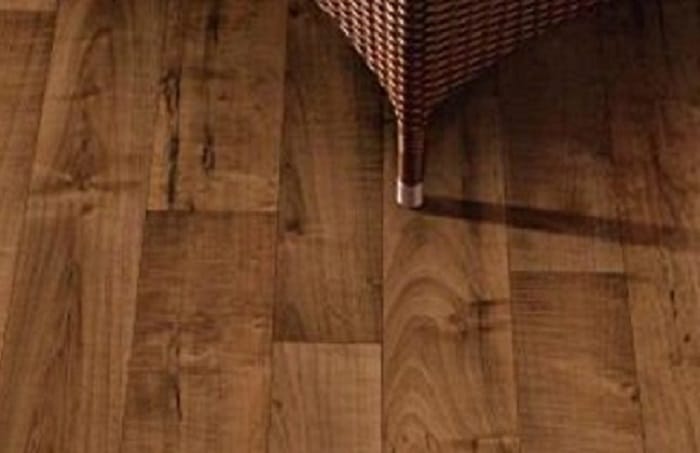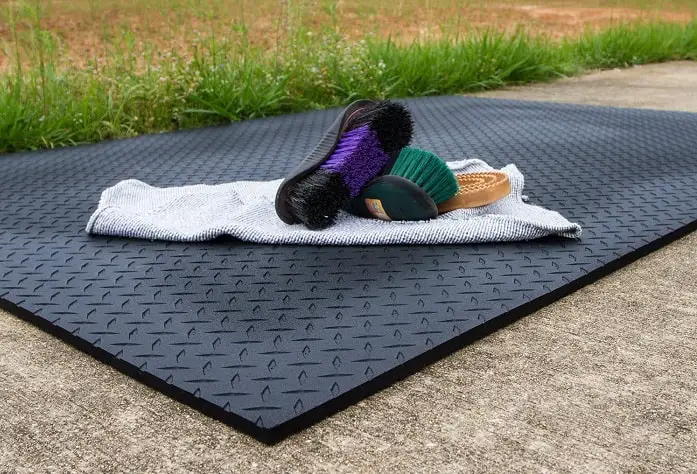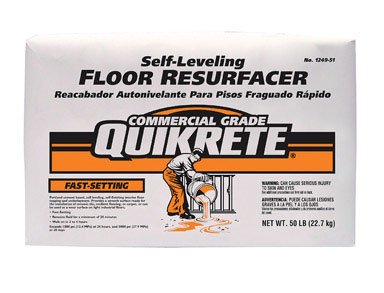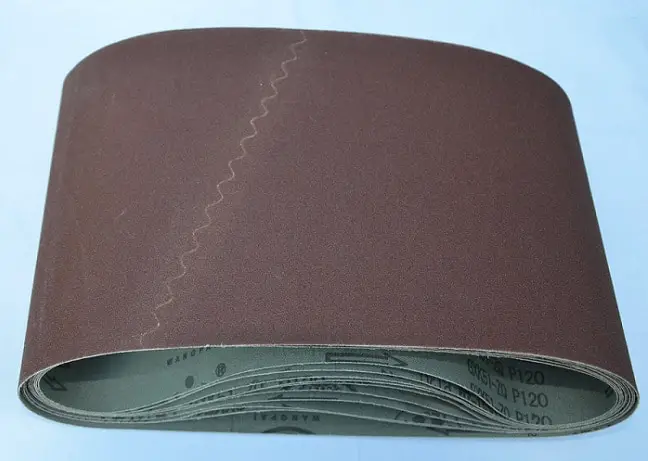11 Options to Upgrade (or Fix) Your Shed Floor
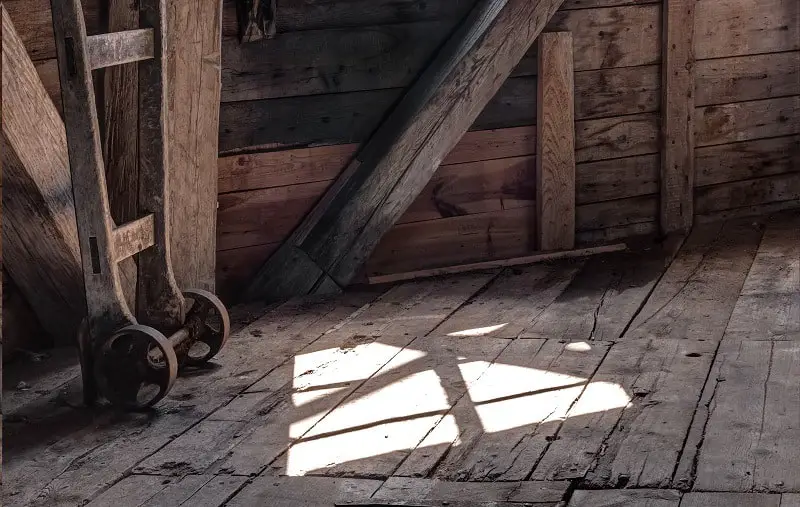
Quick Navigation
Looking for Shed Foundations? The review of the 6 most popular foundations used for sheds is here
WHEN YOU WALK UP THE RAMP and open the door, what do you see when you look down?
Do you see a nice smooth shed floor that literally invites you in?
Do you see a dirty, dingy mess that drives you back outside?
All kidding aside, all of your time in your shed is spent on your shed floor. So it's important that it's solid, dependable and also comfortable.
Because of that we are going to take a good look at the many different problems that can happen with your shed floor. We are also going to cover a few great ways to fix up your garden shed floor.
Common problems with Garden Shed Floors
There are many things to consider when building a shed floor, most of which concern your overall comfort while working in your shed.
However, no matter what you plan to use your garden shed for, it needs to have a solid floor that is in good condition, suited to the intended use and comfortable to work on.

1. Too Cool
No one likes to work with cold feet. When your shed floor is nothing more than a concrete slab, this is a very common problem.
The same can be said of a wood floor with a crawl space underneath it. When you have to work in this type of environment, chances are good you won’t spend much time in your shed.
On top of this, if your floor is cold, it’s a sure bet the rest of your shed will be as well.
2. Too Hard
You built your shed as a place to work on projects that often take hours of your time. The last thing you need is a hard floor that makes your feet feel tired.
Concrete might provide a great foundation for your shed, but no one wants to stand for long periods of time on a bare concrete slab. All you have to do is look where the cashiers stand in most stores to see this, even store owners add a mat for their employees to stand on.
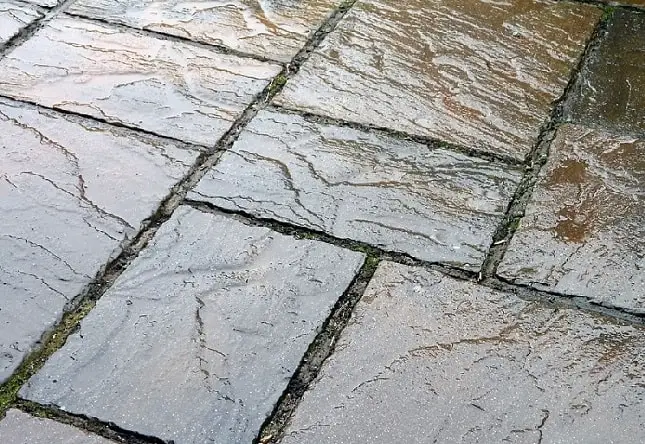
3. Slippery
Remember the last time it rained, you stepped inside your shed and almost fell on your backside when your feet slipped out from under you?
If you live in an area where it rains a lot or for that matter even if it only rains a little, the last thing you need is a slippery garden shed floor.
Painted floors tend to be the worst for this type of problem. Many floor paints, whether the floor is made of wood or concrete, become very slippery when wet. This can make your shed a very dangerous place to hang out when it's wet outside.
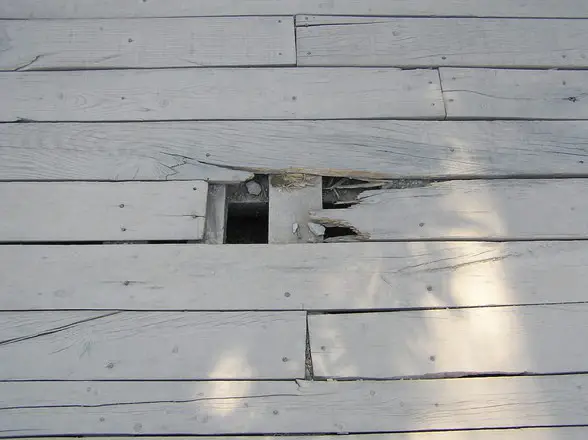
4. Old and Worn Out
So the floor in your shed is just as old as the foundation. Over time it has been subjected to hours of people walking on it, chemicals being spilled, and tools being dropped.
Your shed floor has been soaked by rain when someone left the door open, you name it and it has probably happened to the floor.
Now it has nicks, dings, splinters (if it is made of wood), and is essentially worn out. Not to mention that thanks to numerous stains and ground in dirt, it simply looks terrible.
No one wants to work in a shed with this kind of floor, close the door and go back inside the house.
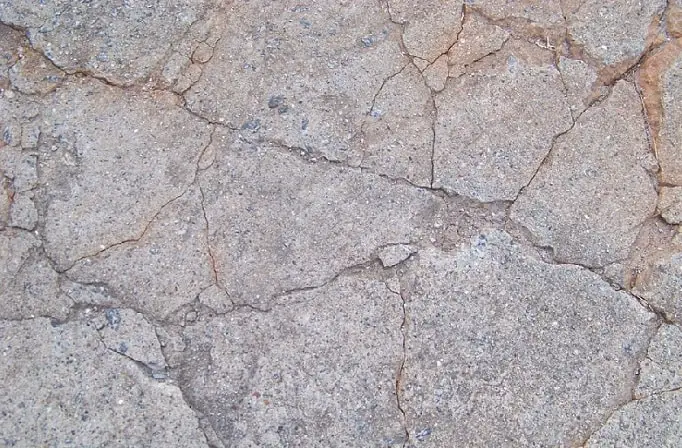
5. Not Level
When you set a ball on your shed floor does the ball stay still or roll into a corner? If it rolls away all on its own, your shed floor is definitely not level.
Doesn’t seem such a big deal? Wait until you are trying to work with a can of paint that overflows on one side or your tools roll away every time you put them down.
What about that big toolbox that won’t quite stay up against the wall because it wants to roll to the other side of your shed. No matter what a shed floor that is not level can cause a lot of problems.
Solutions to Shed Floor Problems
There are a number of different ways to deal with these problems with your garden shed floor. Most are pretty simple and relatively inexpensive.
The most important thing to keep in mind, no matter what the problem is with your shed floor, is that if the floor is uncomfortable or unappealing, you aren’t going to spend much time in your private getaway.
Concrete is a very hard substance and is a great way to create both a foundation and a floor for you garden shed. But it stains easily and over time can begin to look ugly.
One of the best ways to seal your concrete shed floor, spruce it up, and make it look amazing is to use an epoxy coating. This is a type of paint, often available in a wide range of colors, that dries to a shiny rock hard finish.
First, you scrub the floor and prep it, then apply the epoxy coating with a roller and leave it to dry. This can take a couple of days, but it is well worth it.
The only problem with many epoxy coatings is that they can be very slippery when wet. Be sure to buy the non-slip additive and mix it into the coating before you apply it.
Concrete paint is really not much more than paint that is designed to adhere to concrete rather than being used for walls or ceilings. It is available in a wide range of colors and in matt or gloss finishes.
While it is far more durable than say wall paint, in time it will chip and flake. In fact, this type of paint chips relatively easily if you drop tools on it.
Also, worth noting is that most concrete paints require a surface that has been thoroughly cleaned of all greases and residues, something that can be hard to do if your shed floor is old and nasty.

Cement sheet flooring has a lot to offer. First, these sheets can be used over virtually any type of flooring from concrete slabs to timber frames and wood floors.
Cement sheets are moisture proof, durable, and offer a high level of stability. Cement is also impermeable to termites, ants, rot, and meets with most standards for fire resistance.
However, you will need a special tool to cut the sheets to fit in your shed and need to wear appropriate safety gear when working with it. Cement sheets are also quite heavy and can be expensive.
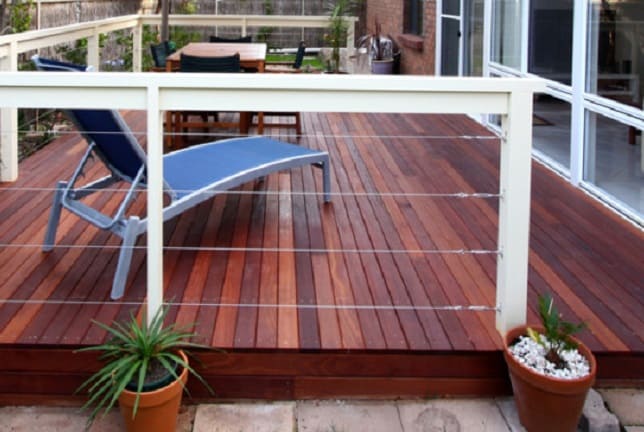
Image Courtesy of Softwoods
4. Timber Over the Top
- For Concrete Slabs, Pavers, Timber Frame and Kit Sheds
Timber over the top makes a great floor covering not only is it a lot softer and warmer for your feet, but it is relatively easy to cut and lay in place.
You get to choose how thick the timbers are, what type of wood they are made from, and how you finish them. Timber can be quite strong depending on your choice of woods.
However, timber can be subject to rot, stains, and in time warpage or damage that makes it less than ideal as a flooring choice.
New timber flooring can be used to create a floor in just about any type of shed. It creates a floor that gives when you walk or stand on it, making it much easier on your feet.
Wood does not transmit cold in the same manner as concrete helping your garden shed to stay warmer in the winter. Once again wood is subject to rot, termites, ants, mice, rats, and damage by several other pests. You will need to keep it sealed well or your timber will stain and become embedded with grease and oil unless you keep it clean.
New plywood is often used as the subflooring or underlayment in new home and shed construction. It is relatively strong and durable depending on the thickness and quality you purchase.
Plywood is easily damaged by water and other chemicals. You can seal and paint it for added protection, but even so, your floor will only have a limited lifespan. Your best bet is to use new plywood as a subfloor and then to cover it with timbers, tiles, carpet, or cement sheets.
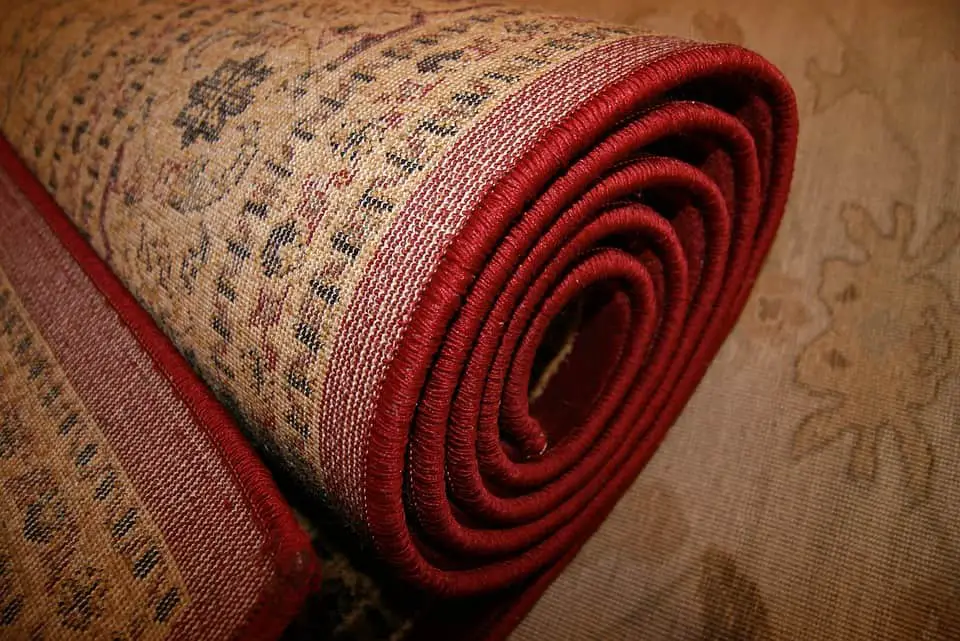
7. Old Carpet
- Great for Small Area Coverage
No matter what type of floor you have in your garden shed, your feet are likely to get sore and cold if you plan to work in your shed for any length of time.
Take a good look around and find the most common areas where you stand while working on your projects. These are the perfect spots for pieces of old carpets.
Carpet is warm and soft, but it does get dirty and stained easily. Be prepared to swap it out on a frequent basis.
Rubber mats have been used in stores and industry as a way to relieve the strain on feet and joints often caused by long hours standing. While a wood floor may be a little softer or carpets add padding, nothing beats a good thick rubber mat.
Rubber has the added advantage of being easy to clean as well as long term durability. Good quality rubber mats can be a little on the spendy side, so be prepared to shell out some serious cash if you want good quality mats.
Image Courtesy of Amazon
9. Concrete Resurfacing / Self - Levelling Compound
- Perfect for Concrete Slabs or Cement Sheet
When your concrete slab has nicks, ding, divots, and rough spots in it, life can get pretty interesting. Your garden shed floor suddenly becomes an obstacle course as you try to move tool boxes around or try to clean up any spills and messes.
You can literally create a new floor surface by using a self-leveling compound. Simply coat the entire floor and let it sit, the compound will flow into all the nooks and crannies leaving behind a nice smooth surface. Keep in mind it could take 24 hours or longer for the compound to completely dry.
Image Courtesy of Amazon
10. Checkerplate or Diamond Plate
- For Concrete Slabs, Pavers, and Timber Frame Floors
Checkerplate or diamond plate is a stainless steel or aluminum flooring that can be used to cover a wide range of floors. It is impervious to most chemicals, water, rot, and pests.
You will need to have it pre-cut to fit your shed or have special tools to cut it. It is the ideal garden shed floor for a shed where you will be performing mechanical work or storing very heavy items.
The biggest drawback to this type of flooring is that it can become slippery when wet, despite the raised patterns. On top of this, checkerplate is very expensive.
Most people don't think of flooring when they hear the word sandpaper. However, you can buy rolls of sandpaper in a range of widths and grits. All you have to do is unroll the sandpaper, peel off the backing, and stick it to a clean surface.
You will have a non-slip surface even when it is wet or oily. However, if you get the sandpaper too wet, it will fall apart. Along with this, over time the grit will wear down and the sandpaper will need to be replaced.
Important points on making your choice
You should also base your final choice when building a shed floor in part on where you live. To do this you need to answer a few basic questions such as is the humidity level high, does it rain a lot, are winters very cold, do you have termites, ants, rats, or mice? All of these problems will significantly affect your final choice.
In Summary...
There is nothing worse than a shed floor that is stained, ugly, uneven, or damaged. If this is what you have to deal with, it's no wonder you don't spend much time out in your shed.
Take a good look at the current condition of your garden shed floor and then choose a floor covering or new floor to suit your needs.
If you know of any other good types of garden shed flooring contact us via the contact page.
If you like what you have just read, share it on Facebook, Pinterest, or Twitter.
Thanks for reading!
Related Articles:

